Gooseberries have a lot of diseases and pests. They are usually common to gooseberries and currants, since both crops belong to the same family - Gooseberries. This page describes the most common gooseberry diseases, methods of their treatment and prevention.
|
Try to choose disease-resistant gooseberry varieties for planting in your dacha, then you will have to treat gooseberry bushes much less often. |
| Content:
|
How and how to treat gooseberries against diseases
Gooseberries in general are quite disease resistant. Different varieties have different sensitivities to harmful agents, so it is better to grow several varieties on the site. Then, when the disease activates, some of the bushes will remain healthy. The exception to this rule is powdery mildew, which affects all varieties, but some less severely.
American powdery mildew (spheroteka)
- the most common and dangerous disease of gooseberries. It has a persistent character, it will not be possible to completely get rid of it, you can only keep the process under control.
The resistance of varieties of European and American groups is different. European varieties are large-fruited, with excellent taste, but are very strongly affected by the pathogen. Shoots (especially young ones), leaves, and berries are damaged. American varieties are small-fruited, but much more resistant. The disease manifests itself only on the tips of young shoots, which can be broken off without harm to growth and yield.
Thus, the summer resident has a choice. When planting large-fruited gooseberry varieties, you will have to constantly spray them with pesticides and wage an unequal fight against the disease. Or even abandon the cultivation of large-fruited varieties and replace them with more resistant American varieties.
The causative agent is a pathogenic fungus. Affects leaves, shoots and berries. It can appear during any growing season, but more often appears after flowering.It develops most actively in humid summers.
Signs of gooseberry disease with powdery mildew
A white cobwebby coating appears on the leaves, ovaries and berries, which is easily erased, but then appears again. Later, the plaque becomes gray and fluffy with black dots, then thickens and becomes felt-like.
|
The leaves on diseased bushes remain underdeveloped, first turn yellow, then turn brown, become corrugated, and later fall off. With severe damage, the gooseberry may lose all its foliage long before the leaves fall. |
Young shoots are bent, their internodes are very short, and they practically do not grow.
When severely damaged, berries dry out and are unsuitable for consumption. But usually in plantings that are being cared for, the berries are affected on one side; the plaque can be cleaned off, but in its place a brown spot with streaks remains. Slightly affected berries are suitable for processing.
Methods for treating spheroteca
During the season, spray three times. The first treatment of gooseberries against disease is carried out in early spring when the leaves bloom. The second after flowering through the ovaries, the third after harvesting.
The main drugs are.
- Topaz. Systemic fungicide. Moves along pathways, penetrating leaves. Protects gooseberries from infection and stops the growth of mycelium. Can be used under irrigation conditions. The period of protective action is 10-14 days.
- Tiovit Jet. Sulfur preparation. Stops the growth of mycelium, but it can only be used in dry weather at temperatures above 20°C. If the nights are cold (14-16°C), then its effectiveness decreases sharply. Because of this, Thiovit in the middle zone does not show such effectiveness as in the south. Use in strictly recommended doses.If the concentration or consumption rate is exceeded, it acts as a defoliant (leads to leaf fall). The author once had such an experience. After exceeding the solution consumption rate by 1.5 times (the nights were cold), the gooseberries completely shed their leaves in July, although the ovaries remained. All the set berries were ripe, although they were a little smaller, but of good quality, without signs of damage. But there was no increase at all. The period of protective action is 7-15 days. The higher the temperature, especially at night, the longer the protection period.
- Forecast. It protects gooseberries well from spheroteca. 1 ml of the drug is diluted in 1 liter of water. The consumption rate for an adult bush is 1.0 l, for a young bush - 0.5 l. The period of protective action is 10-14 days. According to personal observations, Forecast completely stops the development of the pathogen even in damp, cold summers. If you manage to process it on time, the shoots and leaves are minimally affected, and the berries are practically not affected.
- Speed The drug is recommended for combating powdery mildew on fruit trees, but it is also used on gooseberries. The period of protective action is 14 days. Gives a good effect.
- Since the fungus overwinters in tree trunk circles, the soil is spilled with biological preparations: Fitosporin, Lepidocid once every 10 days during the entire growing season.
Spheroteca does not develop resistance to Topaz and Thiovit, so they can be used to treat gooseberries three times during the summer. When treating with other drugs, they alternate.
|
Copper-containing preparations for the control of American powdery mildew are currently ineffective. |
If it is impossible to reduce the incidence of disease in a plot, when the bushes become very sick from year to year, iron sulfate is the drug of last resort.Spraying is carried out once on dormant buds late in the fall (in the absence of precipitation) or early in the spring, until the buds awaken. The concentration of the working solution is 3-5%.
Folk remedies to fight the disease
The most effective folk remedy for combating powdery mildew is treating gooseberry bushes with boiling water. In early spring, before the leaves appear, pour boiling water over the bushes from a watering can. Pour a bucket of boiling water onto an adult bush, making sure that the water gets on all the branches and in the center of the bush. Such a shower will not cause any harm to the plant, this has been tested many times, but it will help get rid of the spheroteca. This method is also suitable for processing currants.
It is believed that rotted hay and compost contain microorganisms that destroy the spheroteca. Therefore, the bush is covered with compost, and gooseberry branches are sprinkled with chopped hay. The hay must be rotten.
After harvesting, the bushes are sprayed with fresh mullein infusion. Manure contains microorganisms that suppress the growth and development of the spheroteca.
|
Pouring gooseberry bushes with boiling water in early spring will help get rid of not only diseases, but also gooseberry pests. |
Disease prevention
There is no specific prevention of the disease. If there are gooseberries and/or blackcurrants on the site, the spheroteca will appear in any case. You can plant American varieties of gooseberries, which are very weakly affected. The affected tops break off. But if you do not take care of such varieties, in the future the disease will affect them in the same way as European varieties.
The varieties Vladil, White Nights, Beryl, Harlequin, and Rodnik are very weakly affected.
Do not plant gooseberries and black currants next to each other, since spheroteca is a common disease for both crops.
Anthracnose
A common disease for gooseberries and currants. The causative agent is a pathogenic fungus. On gooseberries it mainly affects leaves and petioles. It develops very strongly in humid summers. Overwinters on plant debris and damaged bark.
By what signs can the disease be recognized?
Initially, small, light spots appear on the leaves, isolated from each other by large veins. The surface of the spots is shiny or slightly pinkish. Later they merge and turn brown, affecting a significant area of the leaf. Dark brown, slightly depressed spots appear on the petioles.
Since the fungus releases strong toxins during its life, the leaves turn yellow and fall off. The peak incidence occurs in the second half of July. If the bush is significantly damaged, by August it may be left without leaves, and this affects the ripening of young shoots and the winter hardiness of the bushes.
|
The lesion is focal in nature. Some bushes in the plot become sick, while the rest remain healthy. |
How to treat anthracnose
Copper preparations are quite effective in treating gooseberries from anthracnose. When a disease is detected, treatment is carried out 4 times during the season. All bushes are sprayed, not just sick ones.
- Copper preparations: HOM, Ordan, Bordeaux mixture. The first treatment is carried out in the spring when the buds are swelling. The second - after flowering. The third 15 days after the second, the fourth - in the fall at the beginning of leaf fall.
- Forecast. Fungistatic effect: inhibits the development of the fungus, stopping its growth. Does not have a fungicidal effect. Can be used together with copper-containing drugs in case of severe spread of the disease.
- Score. Effective against spheroteca, anthracnose, alternaria.
The pathogen develops resistance to the drugs, so they alternate.
In the early stages of anthracnose development, biological products Alirin B and Fitosporin are effective.
Prevention
Cleaning up plant debris and pruning weak and diseased branches.
Planting varieties resistant to anthracnose: White Nights, Rodnik, Masheka (Belarusian selection), Shershnevsky.
Septoria or white spot
Fungal disease. The pathogen persists in plant debris and on the bark of damaged shoots. Affects gooseberries and currants.
Signs of the disease
The disease appears on gooseberry bushes in early summer. Small brown spots appear on the leaves, surrounded by a border, gradually turning white in the center. The disease continues throughout the growing season. With severe damage, the leaves fall off.
|
Septoria is widespread in the Far East. In the European part, it affects currants more. Gooseberries get sick only in some years and not very badly. |
Don't forget to read:
Ways to combat white spotting
Spraying with copper preparations 3-4 times during the growing season. The first treatment of gooseberries is before flowering, then after flowering, the last after harvesting. Copper preparations are not washed off by rain and leave white spots on the berries, so wash the berries before eating them.
Folk remedies. Treatment of bushes with a 0.5% soda ash solution.
Prevention. Cleaning up plant residues.
Alternaria or black spot
Fungal disease. Affects leaves, shoots and berries. The pathogen persists on plant debris and in the bark.
What do diseased bushes look like?
Large dark gray spots appear along the edges of the sheet, and the sheet becomes deformed. The spots gradually grow.Severely affected leaves fall off. By the end of summer, the bush may lose all its leaves. As a result, the ripening of young shoots and the winter hardiness of the crop decreases.
|
Depressed oblong brown spots appear on the berries and shoots. By the end of summer, an olive-colored coating appears on them - sporulation of the fungus. |
How to deal with Alternaria
Treatment of gooseberry bushes with copper-containing preparations.
- Both copper oxychloride and copper sulfate can be used. Preparations: Abiga-Pik, Ordan, Bordeaux mixture, HOM, etc.
- Ridomil gold. Effective, suppresses Alternaria on many berry and fruit crops. It is not only a protective, but also a healing pesticide. The first spraying is carried out on the budding leaves, the second after flowering, the third after harvesting.
- Acrobat. Treat 3 times per season.
To prevent pathogen resistance, drugs are alternated.
Prevention. Cleaning up plant residues. Preventive spraying is carried out with biological products: Fitosporin, Gamair, Alirin.
Do not miss:
Conclusion
Gooseberry diseases are much more difficult to fight than pests. Here you need to clearly maintain the frequency of treatments and solution consumption. But by following all the instructions, diseases can be kept under control.
You might be interested:
- Recommendations for beginning gardeners on planting and caring for gooseberries
- How to prune gooseberries correctly
- The best varieties of gooseberries for planting in the country
- Currant diseases and their control
- Strawberry diseases and methods of treating them
- Treating the garden in spring against diseases and pests
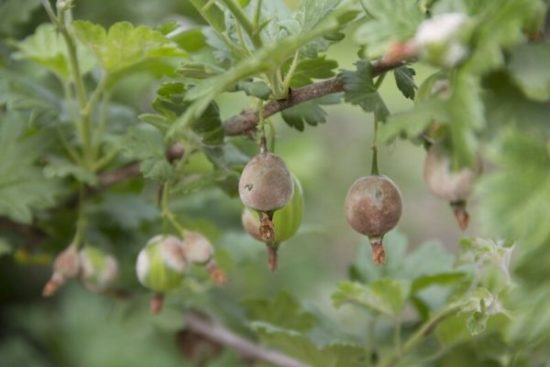
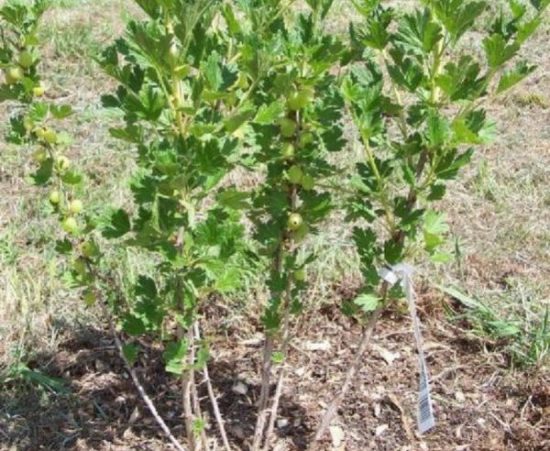
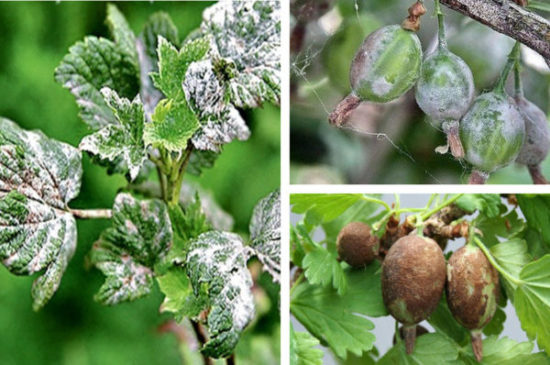
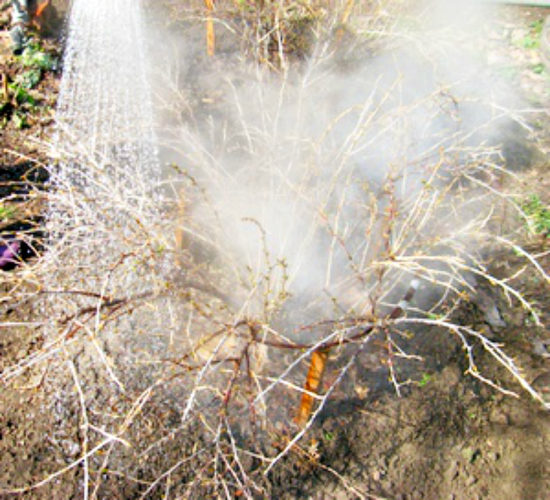
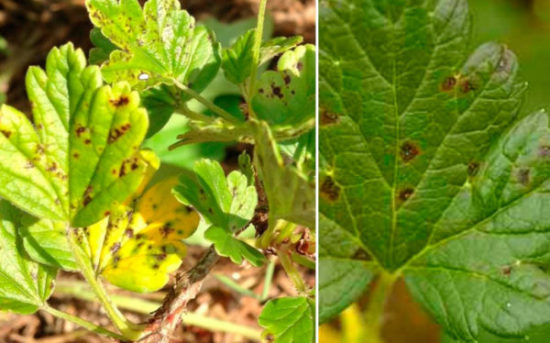
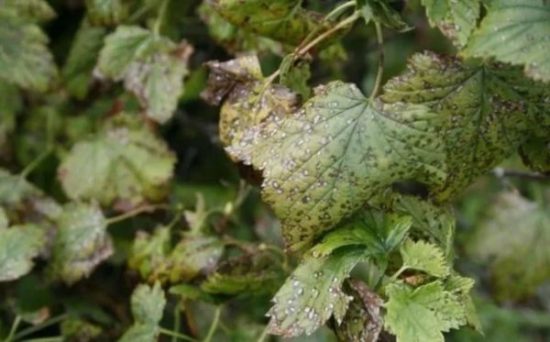
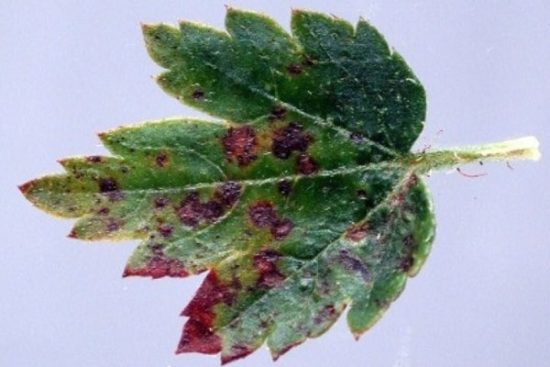

 CUCUMBERS NEVER GET SICK, I'VE BEEN USING ONLY THIS FOR 40 YEARS! I SHARE A SECRET WITH YOU, CUCUMBERS ARE LIKE THE PICTURE!
CUCUMBERS NEVER GET SICK, I'VE BEEN USING ONLY THIS FOR 40 YEARS! I SHARE A SECRET WITH YOU, CUCUMBERS ARE LIKE THE PICTURE! You can dig a bucket of potatoes from each bush. Do you think these are fairy tales? Watch the video
You can dig a bucket of potatoes from each bush. Do you think these are fairy tales? Watch the video
 How our fellow gardeners work in Korea. There is a lot to learn and just fun to watch.
How our fellow gardeners work in Korea. There is a lot to learn and just fun to watch. Eye trainer. The author claims that with daily viewing, vision is restored. They don't charge money for views.
Eye trainer. The author claims that with daily viewing, vision is restored. They don't charge money for views. A 3-ingredient cake recipe in 30 minutes is better than Napoleon. Simple and very tasty.
A 3-ingredient cake recipe in 30 minutes is better than Napoleon. Simple and very tasty. Therapeutic exercises for cervical osteochondrosis. A complete set of exercises.
Therapeutic exercises for cervical osteochondrosis. A complete set of exercises. Which indoor plants match your zodiac sign?
Which indoor plants match your zodiac sign? What about them? Excursion to German dachas.
What about them? Excursion to German dachas.